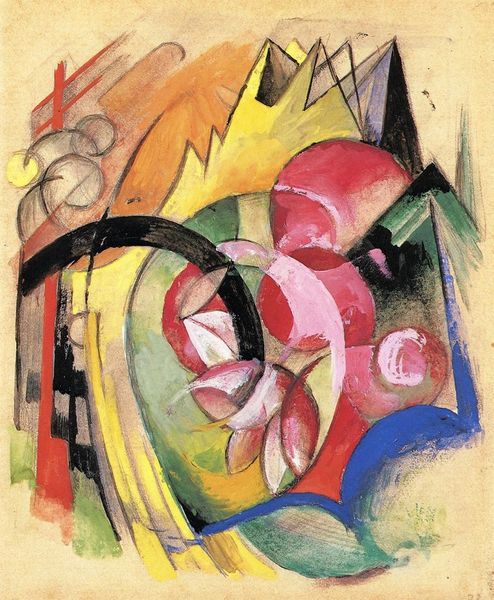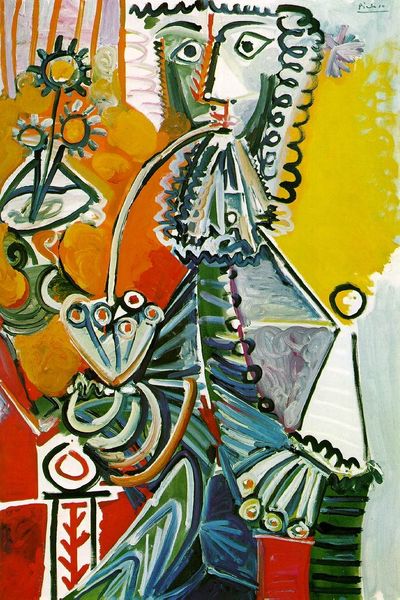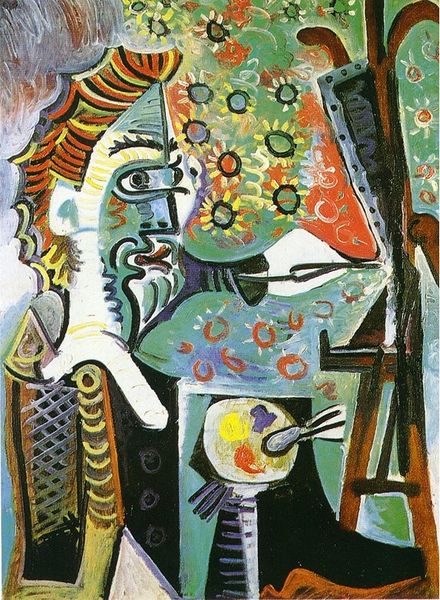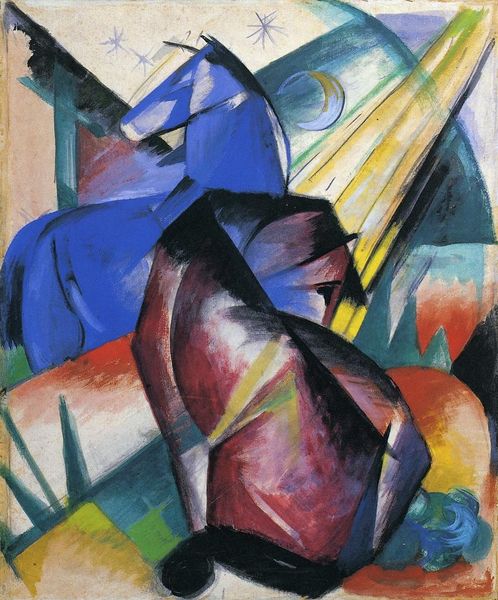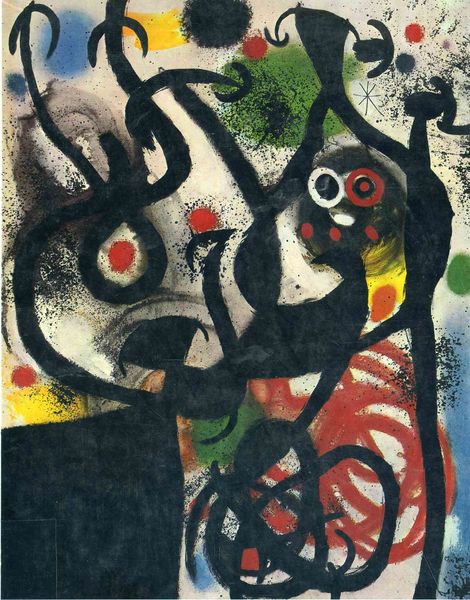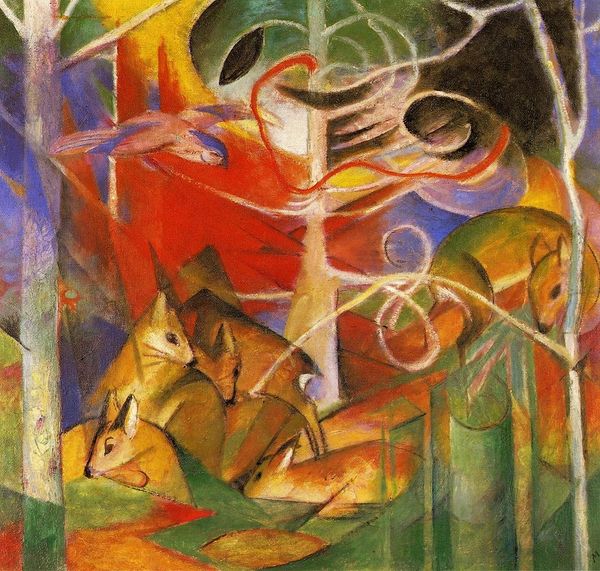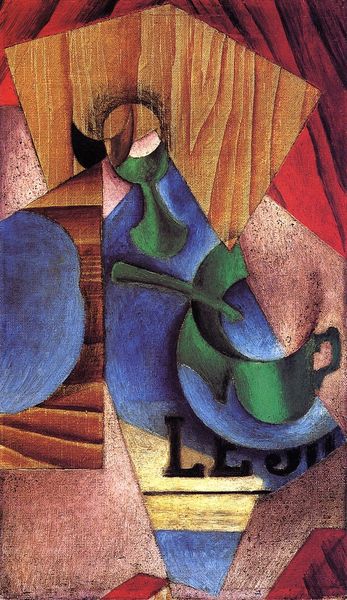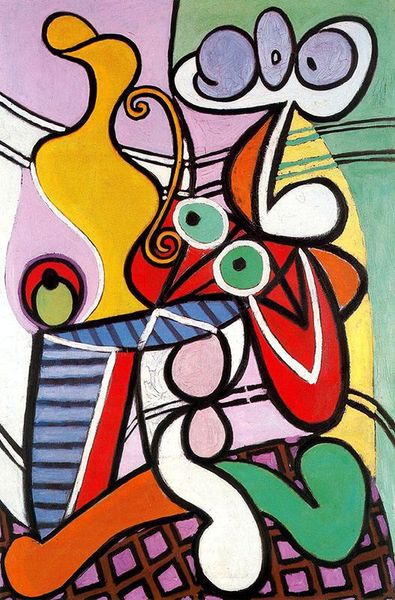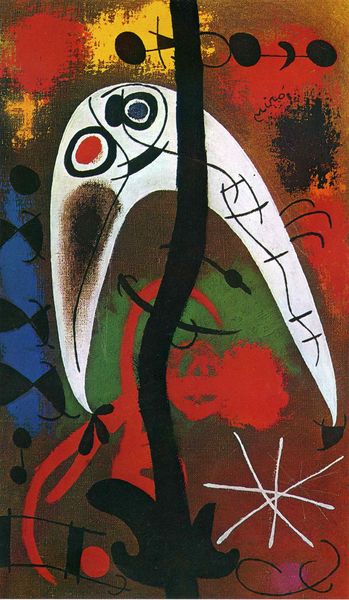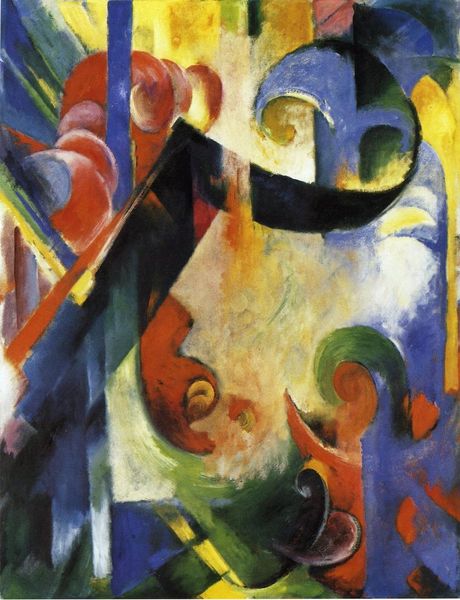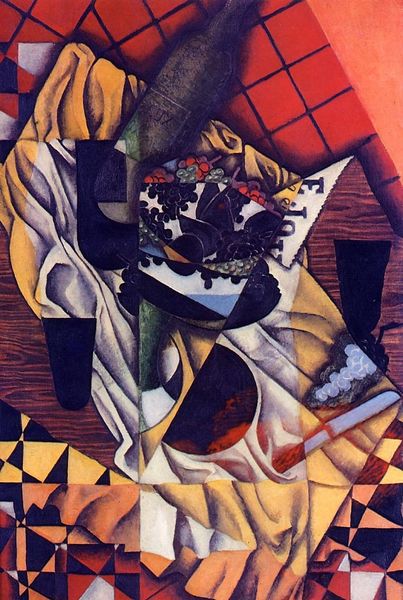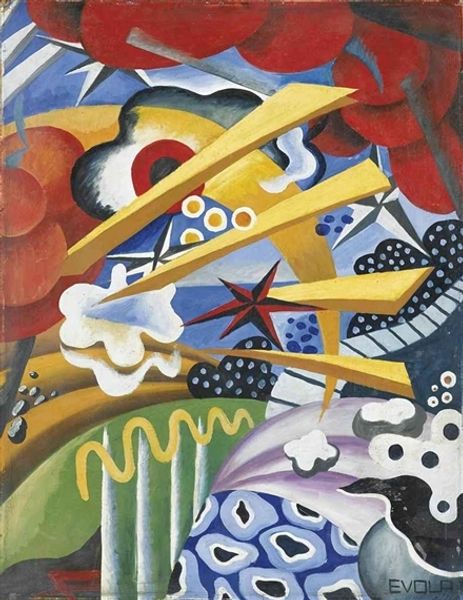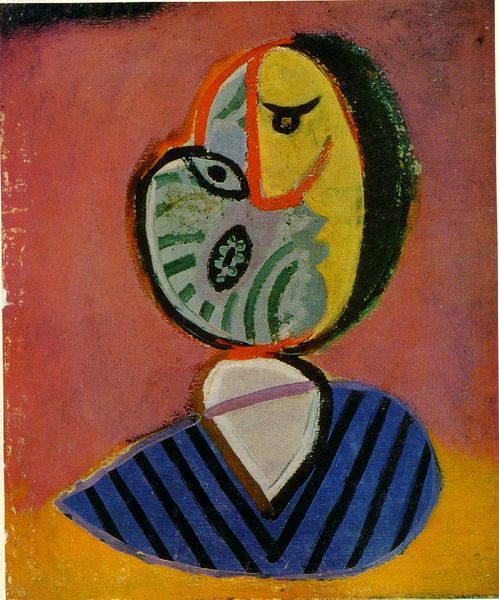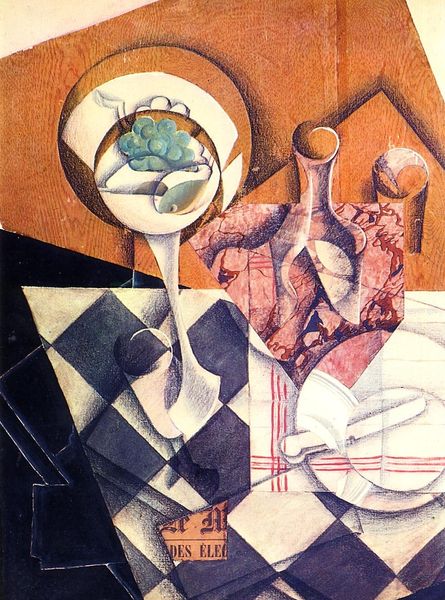
painting, oil-paint
#
art-deco
#
cubism
#
painting
#
oil-paint
#
asian-art
#
rayonism
#
figuration
#
oil painting
#
geometric
#
russian-avant-garde
#
futurism
Copyright: Public domain US
Curator: Immediately, I'm drawn in by the fragmented planes of color, it's such a bold composition, almost a controlled explosion of form. Editor: You’ve picked up on its striking visual language! What we're looking at is Natalia Goncharova’s "Espagnole," an oil painting created in 1914. It is exemplary of the artist’s application of Cubo-Futurist principles within the context of the Russian Avant-Garde. Curator: The layering of textures is just fantastic, the interplay between geometric shapes and the softer floral motifs. What was Goncharova saying with these combined stylistic components? Editor: Absolutely. Consider the socio-political landscape in Russia at the time. Goncharova was not merely playing with form; she was actively dismantling the hierarchies of art and craft. The traditionally 'feminine' craft of floral decoration, contrasted with Cubo-Futurism’s machine-age aesthetics, becomes a commentary on gender roles and social expectations. Furthermore, she engaged with theories around “peasant art”, appropriating these motifs that tied art to everyday life of those creating folk pieces, to create dialogue on Russia's social classes. Curator: That makes a lot of sense. And you can really see how Goncharova worked with the materials at hand, playing with different brushes to vary textures and really bring the eye into this world of hers. Looking at the brushwork more closely now, this painting truly shows the synthesis of industrial process and human creativity. It is also such an incredibly busy picture with so many surfaces and details that pull your attention at the same time, showing a certain lack of refinement. It makes you wonder about what materials were available and in use in Russia at the time? Editor: Precisely. This lack of a focus on a highly finished surface might then also become a conscious rejection of the elite art establishment that championed “high art” from Western Europe. How this challenges Western hegemony, that very active gesture of seeking an identity rooted in an alternative origin, offers ways in which her art transcends mere stylistic experimentation. Her art represents a deep exploration of identity within an international art world, a struggle to define Russianness. Curator: Considering this deeper context adds another layer to my interpretation of Goncharova's use of materials. Initially, the color seemed almost arbitrary. But given its context of questioning industrialism and also folk techniques, her materials and creative application truly reflect on contemporary issues of Russia’s position in a quickly globalizing world. Editor: I agree completely; understanding both her process and artistic intentions reveals the artwork's true power. Goncharova certainly demands us to re-think traditional notions of identity, medium and craft.
Comments
No comments
Be the first to comment and join the conversation on the ultimate creative platform.
